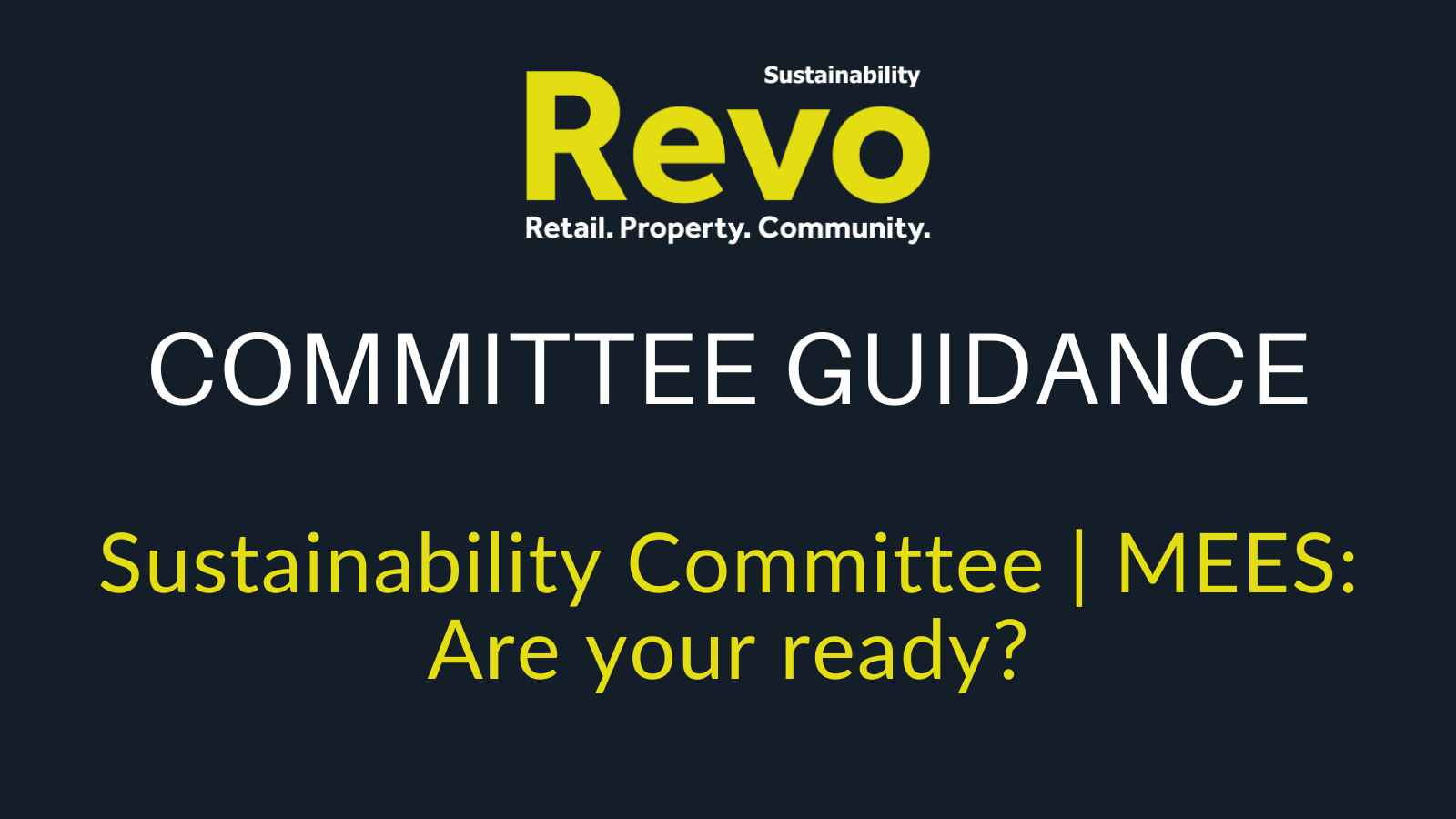Written by – The Revo Sustainability Committee & Hilary Clayton-Mitchell
MEES: Are you ready?
After a Summer where temperature records climbed above 40˚C for the first time, and transport systems went into meltdown: Kings Cross and Euston stations both closed, literally buckling under the strain, the environment is a key concern for many. Environmentalists have been warning for many years about global warming and the harm done by unrestricted consumption and energy usage, and we have likely missed numerous deadlines on this front already. Others, though, are still up-coming such as the 5-year lead-in to 2018’s Minimum Energy Efficiency Standard (MEES) regulations. 1st April 2023 is one deadline that the commercial property world cannot ignore.
More than just an EPC
Since 2018 commercial properties have required an energy performance certificate (“EPC“) evidencing a rating of E prior to the grant of a new lease. From April 1 2023, this requirement will apply to all leases, meaning it will be unlawful to continue letting a commercial property with an EPC rating of less than E. That is, unless, certain limited exemptions apply. If there is no valid exemption registered for a property, then there is a risk of fines of up to £150,000 in addition to other penalties. Suggestions are that the target EPC rating will increase to B by 2030 and therefore, the extent of works needed to improve the EPC rating will also increase.
Where does the responsibility fall?
The aim of MEES was (and is) to encourage landlords and property owners to improve the energy efficiency of their properties. To a certain extent, the industry has been doing just that. Many landlords, whether they own a large portfolio or not, have used the lead-in time to MEES wisely. They have been checking and enhancing EPC ratings.
Other landlords have done less, but there could be numerous reasons for this. Assessing buildings for their EPC rating is not always easy, especially if they are occupied. However, the responsibility for implementation of MEES falls upon landlords under the statutes. This is the case even though most of the energy consumed by a building is by the tenant(s).
Mission critical
The importance of spreading an understanding of the implications of MEES across all parties in the commercial property field is key. Building owners and their legal and estates teams; their equivalents on the tenant’s side; plus, the design teams and fit-out contractors that turn it all into reality. Gains from enhanced EPC ratings are universally positive. Not just for the environment and the public, but, for landlord and tenants alike. For example, the Carbon Trust has reported that “a 20% cut in energy costs represents the same bottom-line benefit as a 5% increase in sales”. Tenants are likely to look for more energy efficient properties when faced with a property move and landlords will find the demand for their properties (both in terms of letting and investment value) might be higher in those properties are that are more efficient.
With the costs of energy going through the roof, retailers are already looking at the daunting prospect of slashing their lighting requirements: no more 3,000-lux bouncing off polished Carrara marble floors in boutiques. A key step in the process is engagement on all sides as there will have to be compromises and changes in attitudes by both landlords and tenants.
Companies are being required to state their Environmental Social and Governance (“ESG“) policies and could be held to account if any statements prove to be false. This could be the public accountability that companies need to provoke change.
Collaboration, data sharing and data recording is the way forward. Any change needs to be assessed and monitored and that can’t happen without someone capturing and analysing the underlying data. Green Clauses in leases might not be the best place to impose environmental obligations but they can be used to require the recording and sharing of data as between occupiers and building owners.
Immediate next steps
So, if all new and existing leases of any properties with an EPC rating of F or G are unlawful from 2023, what can be done?
- Seek advice on whether a property falls within an
- Register any exemption to avoid enforcement action.
- Carry out an EPC and identify any sub-standard properties.
- Check any existing EPCs thoroughly. The manner in which the assessment was made might have been based on certain assumptions which were incorrect. By correcting some assumptions it is possible to improve certain EPC ratings without the need to carry out any works.
- Obtain fee proposals for the costs of improving a property to bring it to the required target EPC rating. This not only helps a landlord make an informed decision but also might help a landlord claim (and prove) the benefit of an exemption.
- Seek any consents for the works to be carried out and keep a full record. Once again, this can be helpful in the event that the landlord wants to claim an exemption.
- Landlords should not assume that it is able to pass all or any the costs of the improvement works on to tenants via a service charge. A full analysis of the terms of the lease(s) would be required.
- Green Clauses in leases are often mentioned. This is often a shorthand way of referring to the need for a lease to reserve rights for a landlord to enter into a let property to carry out works to the tenant’s demise to comply with MEES Regulations.
Time marches on towards next year’s 1st April deadline but an awareness of MEES’s implications and ramifications needs to continue to increase.

